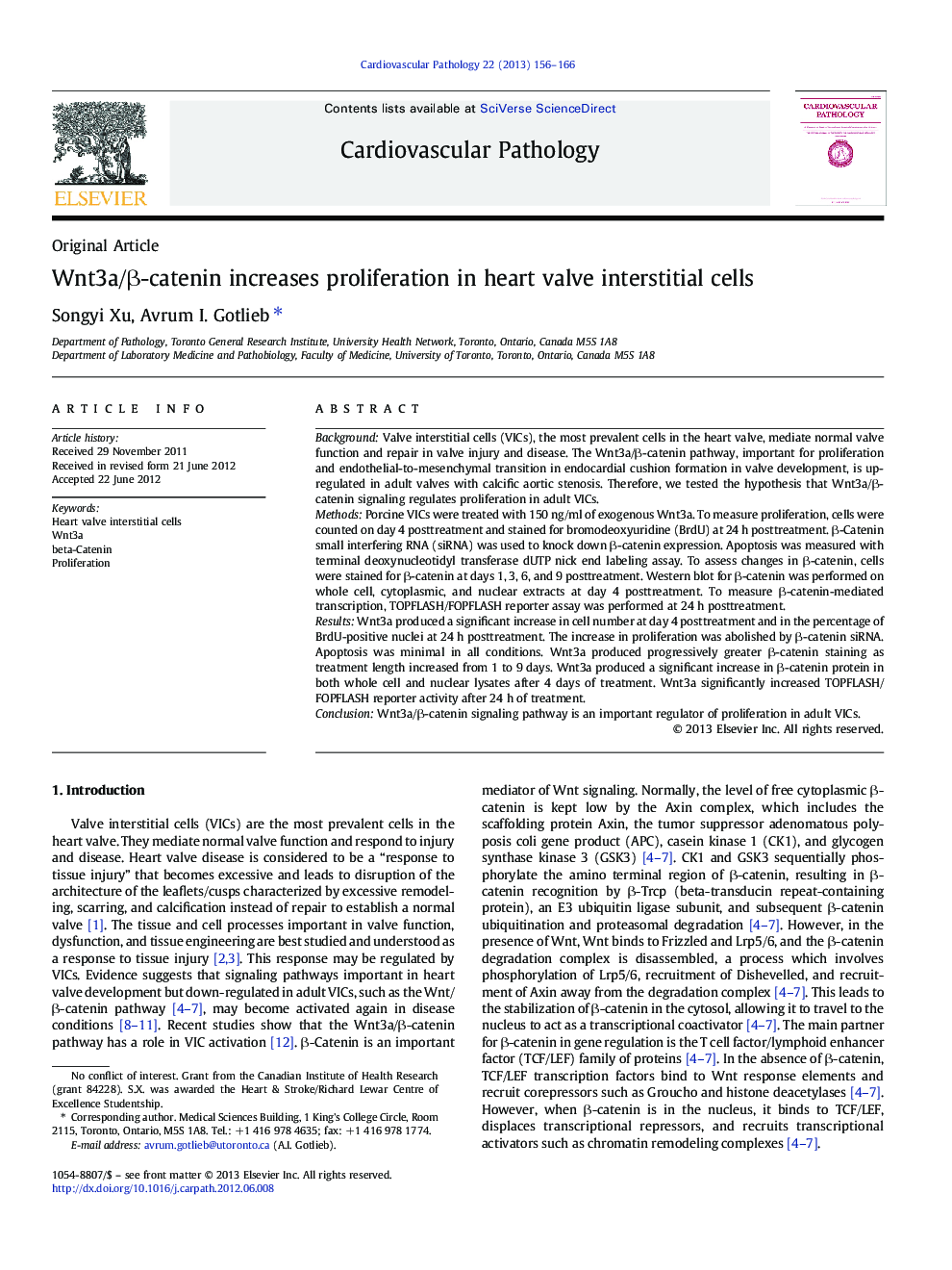| Article ID | Journal | Published Year | Pages | File Type |
|---|---|---|---|---|
| 2898658 | Cardiovascular Pathology | 2013 | 11 Pages |
BackgroundValve interstitial cells (VICs), the most prevalent cells in the heart valve, mediate normal valve function and repair in valve injury and disease. The Wnt3a/β-catenin pathway, important for proliferation and endothelial-to-mesenchymal transition in endocardial cushion formation in valve development, is up-regulated in adult valves with calcific aortic stenosis. Therefore, we tested the hypothesis that Wnt3a/β-catenin signaling regulates proliferation in adult VICs.MethodsPorcine VICs were treated with 150 ng/ml of exogenous Wnt3a. To measure proliferation, cells were counted on day 4 posttreatment and stained for bromodeoxyuridine (BrdU) at 24 h posttreatment. β-Catenin small interfering RNA (siRNA) was used to knock down β-catenin expression. Apoptosis was measured with terminal deoxynucleotidyl transferase dUTP nick end labeling assay. To assess changes in β-catenin, cells were stained for β-catenin at days 1, 3, 6, and 9 posttreatment. Western blot for β-catenin was performed on whole cell, cytoplasmic, and nuclear extracts at day 4 posttreatment. To measure β-catenin-mediated transcription, TOPFLASH/FOPFLASH reporter assay was performed at 24 h posttreatment.ResultsWnt3a produced a significant increase in cell number at day 4 posttreatment and in the percentage of BrdU-positive nuclei at 24 h posttreatment. The increase in proliferation was abolished by β-catenin siRNA. Apoptosis was minimal in all conditions. Wnt3a produced progressively greater β-catenin staining as treatment length increased from 1 to 9 days. Wnt3a produced a significant increase in β-catenin protein in both whole cell and nuclear lysates after 4 days of treatment. Wnt3a significantly increased TOPFLASH/FOPFLASH reporter activity after 24 h of treatment.ConclusionWnt3a/β-catenin signaling pathway is an important regulator of proliferation in adult VICs.
